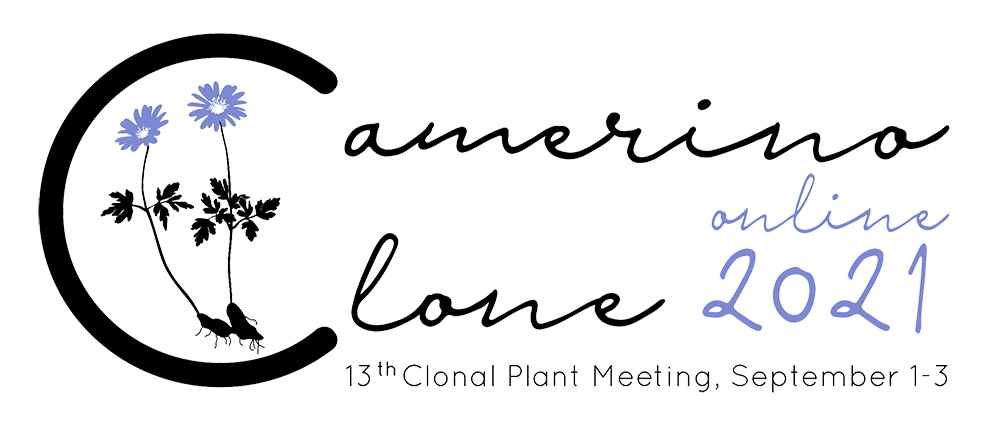Speakers
Jitka Klimešová
Do clonal plants rule the world? And why not?
We have been sharing our research on clonal meetings already for three decades. A red line going through all those meetings is the idea that it is super nice to be a clonal plant: clonal plants may forage for nutrients, they may share resources, they are good in competition, survive stressful conditions, thrive under recurrent disturbance, they reproduce without sex, and, consequently, all plants want to be clonal and therefore clonality was invented during evolution repeatedly in different clades. But is this perception of clonality really valid? Last research shows that clonality is easily gained and easily lost in evolution and that clonal plants, although they are prevailing in some vegetation types, they may be rather rare in others. In my talk I will highlight questions that we should be asking to get a more realistic view of clonality in plants.
Institute of Botany, Czech Academy of Sciences, CZ-37901 Třeboň, Czech Republic. Department of Botany, Faculty of Science, Charles University, Benátská 2, CZ-128 01 Praha 2, Czech Republic.
Cody Coyotee Howard
Ecological and evolutionary consequences of geophytism in monocots.
Geophytes are plants that possess belowground buds typically found on structures such as a bulb, corm or rhizome. These modifications to the stem, root and/or leaf for belowground resource storage allows geophytes to effectively cope with periods of unfavorable environmental conditions. Geophytes can draw upon these reserves during times of resource scarcity (e.g., drought) and disturbance (e.g., fire) to continue growth and/or to begin growth at the onset of the favorable growing season. Investigating the factors that have contributed to geophytes’ current belowground diversity is vital to understanding how these plants have responded to evolutionary pressures in their own unique ways. Unfortunately, the factors promoting their belowground morphological diversity have remained largely elusive. Here, analyses of global climate and phylogenetic data for the monocots will be used to examine the evolution of geophyte morphology and its ecological relationship. This work serves as a first step towards a more holistic understanding of geophytism and paves the way for deeper examinations of these plants.
Florida Museum of Natural History, University of Florida, Gainesville, Florida, USA. Department of Biology, University of Florida, Gainesville, Florida, USA. http://www.codycoyotee.com/
Joana Bergmann
The role of root hairs in belowground plant economy
Plant resource economics are classically defined as a spectrum ranging from “fast” acquisition to “slow” conservation which is well established for aboveground organs – mainly leaves. However, belowground plant organs like fine roots but also clonal traits like bud-bank size are still underrepresented in this concept. Recent findings suggest that root traits are multidimensional particularly because of their interaction with soil biota. A trade-off between the investment into absorptive root length and arbuscular mycorrhizal colonization – the collaboration gradient – has been demonstrated using specific root length (SRL) as a proxy for a “do-it-yourself” strategy. However, it is well known that smaller microscopic structures – namely root hairs – strongly affect phosphorus uptake by maximizing the absorptive surface of the root. Therefore, variation in length and incidence of root hairs might balance differences in the strength of mycorrhizal symbiosis both on intra- and interspecific level. Furthermore, vegetative regeneration potential might be associated with the belowground conservation gradient.
Data on root hairs are scarce in databases and not included in recent concepts of resource economics. This is mainly because of the effort that it takes to measure traits on root hairs under the microscope. Trying to close this data and knowledge gap various traits have now been measured on large European grassland species sets including intraspecific variation in response to mycorrhizal colonization. Furthermore, data on bud-bank size have been included to study the role of clonality within the root economics space of grassland communities. It appears, that a comprehensive understanding of the intra- and interspecific pattern along different belowground economic trade-offs is of major importance for plant ecology.
Leibniz Centre for Agricultural Landscape Research (ZALF)
Tristan Charles-Dominique
Architecture of some ecologically successful clonal plants
Because many clonal plants have a large part of their perennial structures located belowground (root suckers sensu lato), we dispose of very few analyses of their whole plant architecture. I will illustrate how analysing their architecture could inform on their ecological performance. In a first part, I will describe the architecture of three invasive clonal plants in temperate systems (two woody spp.: Zanthoxylum americanum, Rhus typhina; one non woody sp.: Phragmites australis), synthesize key events in their development and show how phenotypic plasticity on these events impacts their ecological behaviour. In a second part, I will compare the architectural traits of clonal versus non clonal species in tropical and sub-tropical systems (from South Africa and China) to reveal how clonality influences species functioning and ecological performance in frequently disturbed environments.
French National Centre for Scientific Research (CNRS) – Institute of Ecology and Environmental Sciences of Paris, France. https://www.researchgate.net/profile/Tristan_Charles-Dominique




